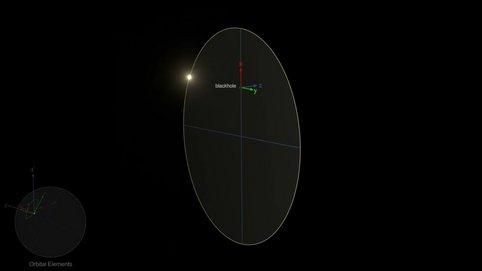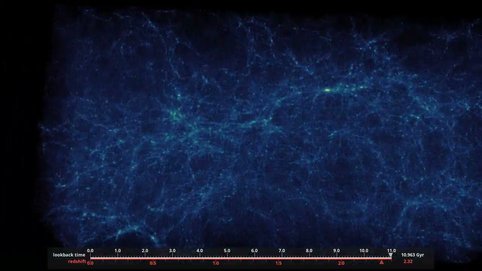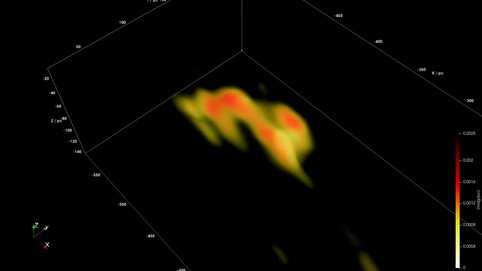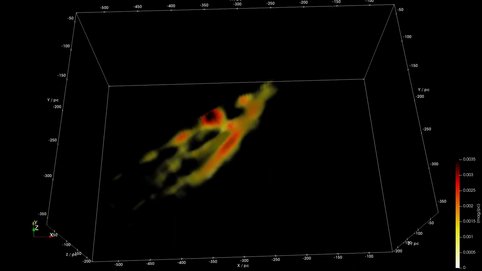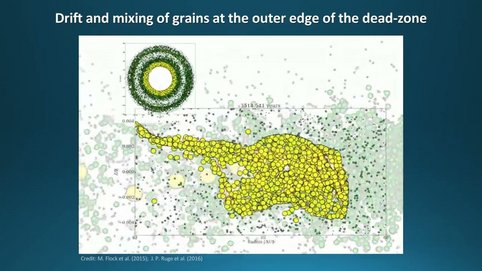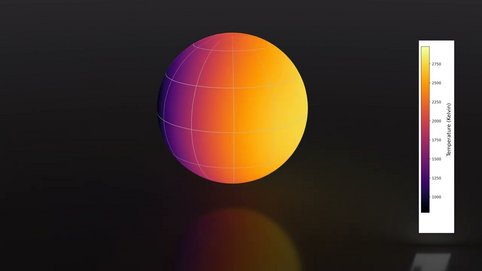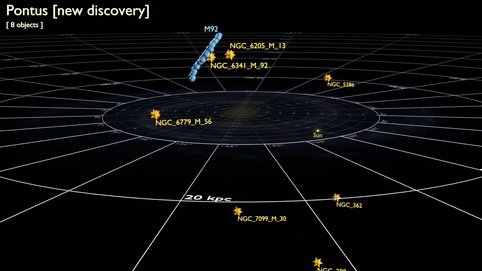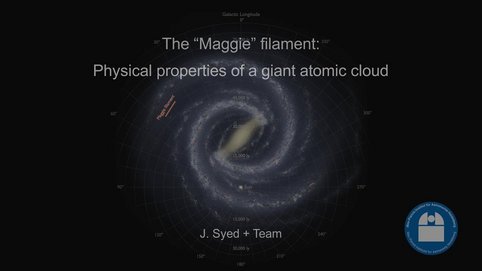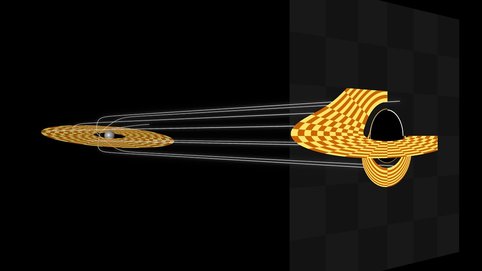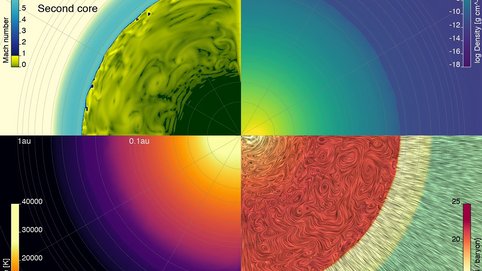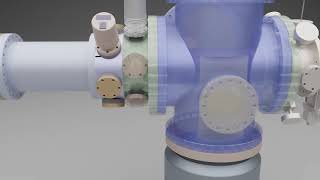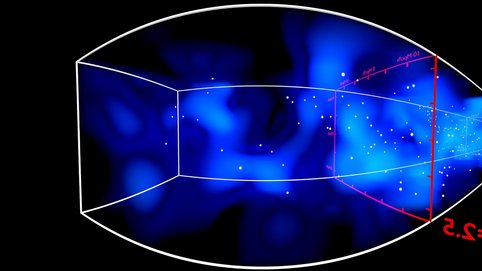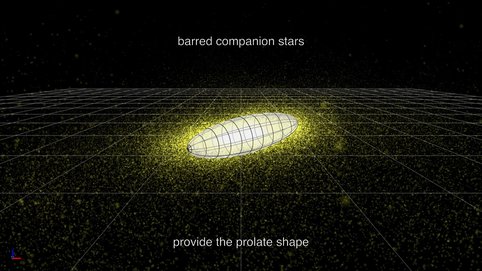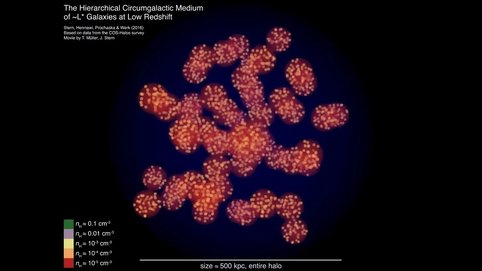Videos
Excerpt of several science-videos
This is an excerpt of videos created in cooperation with various scientists of the Max Planck Institute for Astronomy (MPIA)
Further visualizations and interactive applications can be found here.
Zoom to the black hole Gaia BH1
Zooms into the Milky Way to the position of the stellar black hole “Gaia BH1”, currently the black hole closest to Earth.
Video: T. Müller
https://www.youtube.com/watch?v=0B3X0cIbaNM
Video: T. Müller
Predicted Future Fate of COSMOS Galaxy Protoclusters over 11 Gyrs with Constrained Simulations
Video: T. Müller, M. Ata
https://www.youtube.com/watch?v=xcFw_zGyBhY
California-Nebula in 3D
This animation shows the California Molecular Cloud in a 3D reconstruction with 160,000 stars as extinction probes with precise distance estimates. The distance measurement is based on the Gaia EDR3 star catalog.
Video: T. Müller, S. Rezaei Khoshbakht
https://www.youtube.com/watch?v=lZJNEf5roe8
Video: T. Müller, S. Rezaei Khoshbakht
Orion A-Nebula in 3D
This animation shows the Orion A molecular cloud in a 3D reconstruction with 60,000 stars as extinction probes with precise distance estimates. The distance measurement is based on the Gaia EDR3 star catalog.
Video: T. Müller, S. Rezaei Khoshbakht
https://www.youtube.com/watch?v=f4paK6XCbXs
Video: T. Müller, S. Rezaei Khoshbakht
Planet Formation
This collection shows the major stages of planet formation, from small-scale dust growth and destruction by various particle collisions,
to large scale simulations of dust and gas which show areas of dust concentration in the protoplanetary disk for particles of a few millimeters. In these areas, the dust can continue to grow and collapse into km-sized planetesimals which is shown in the second simulation. The final zoom shows the system PDC 70c which shows for the first time a young planet in a gas and dust disk.
Video: T. Henning, M. Flock, T. Müller
Music: K. Jäger
https://www.youtube.com/watch?v=tbM2BwgncSw
to large scale simulations of dust and gas which show areas of dust concentration in the protoplanetary disk for particles of a few millimeters. In these areas, the dust can continue to grow and collapse into km-sized planetesimals which is shown in the second simulation. The final zoom shows the system PDC 70c which shows for the first time a young planet in a gas and dust disk.
Video: T. Henning, M. Flock, T. Müller
Music: K. Jäger
Temperature map of the hot Jupiter WASP-121 b
First detailed measurements of atmospheric conditions on the nightside of a tide-bound hot Jupiter and change in the physical state of water as it moves between the hemispheres of exoplanet WASP-121 b.
Video: T. Müller, T. Mikal-Evans
https://www.youtube.com/watch?v=oEOb_M_ZlsY
Video: T. Müller, T. Mikal-Evans
The origin of the globular clusters, stellar streams and satellite galaxies of our Milky Way
Location of globular clusters, stellar streams, and galaxy mergers as extracted from GAIA EDR3 data.
Video: T. Müller, K. Malhan
Music: A. MakeMusic (pixabay)
https://www.youtube.com/watch?v=sS5kMkT8mdE
Video: T. Müller, K. Malhan
Music: A. MakeMusic (pixabay)
“Maggie” filament
Distribution of atomic hydrogen, with the measured velocities represented by different colours.
Video: T. Müller, J. Syed
https://www.youtube.com/watch?v=sLX7HNclaFA
Video: T. Müller, J. Syed
Raytracing of a Black Hole and its Shadow
Light rays follow the curved space-time and thus create a distorted image of an accretion disk.
Video: T. Müller, M. Pössel
https://www.youtube.com/watch?v=bd4m217y6j0
Video: T. Müller, M. Pössel
Collapse of a 1 M☉ molecular cloud core
The video illustrates the collapse of a 1 M☉ molecular cloud core as it transitions through the first and second collapse stages, which lead to the birth of a star.
Video: T. Müller, A. Bhandare
https://www.youtube.com/watch?v=lhkjP74RayI
Video: T. Müller, A. Bhandare
One helium droplet at a time
A new nanocalorimetry technique for characterizing the energetics of surface reactions at low temperatures.
Video: T.Müller, S. A. Krasnokutski
https://www.youtube.com/watch?v=qe7l5OQ4KKQ
Video: T.Müller, S. A. Krasnokutski
Tomographic Map of z=2.05-2.55 Lyman-alpha Forest Absorption
3D tomographic reconstruction of Lyman-alpha absorption (blue) at z=2.05-2.55 within the COSMOS field, using background galaxies and quasars observed with the Keck-I telescope. ...
Video: T. Müller, K.G. Lee
https://www.youtube.com/watch?v=QGtXi7P4u4g
Video: T. Müller, K.G. Lee
How to make a cosmic spindle
The formation of an elliptical galaxy in prolate rotation. The mechanism shown here was proposed by Athanasia Tsatsi and her colleagues in order to explain the recent discoveries of galaxies of this kind with the CALIFA survey....
Video: J. Chang, T. Müller
https://www.youtube.com/watch?v=G7Iml_QHe-0
Video: J. Chang, T. Müller
Hierarchical Circumgalactic Medium of ~L* Galaxies at Low Redshift
Reconstruction of the distribution of gas around low-redshift, Milky-Way-sized galaxies. The reconstruction is based on a new photoionization modeling method for CGM absorption lines surveys
Video: T. Müller, J. Stern
https://www.youtube.com/watch?v=UVxeE4L3tzM
Video: T. Müller, J. Stern
